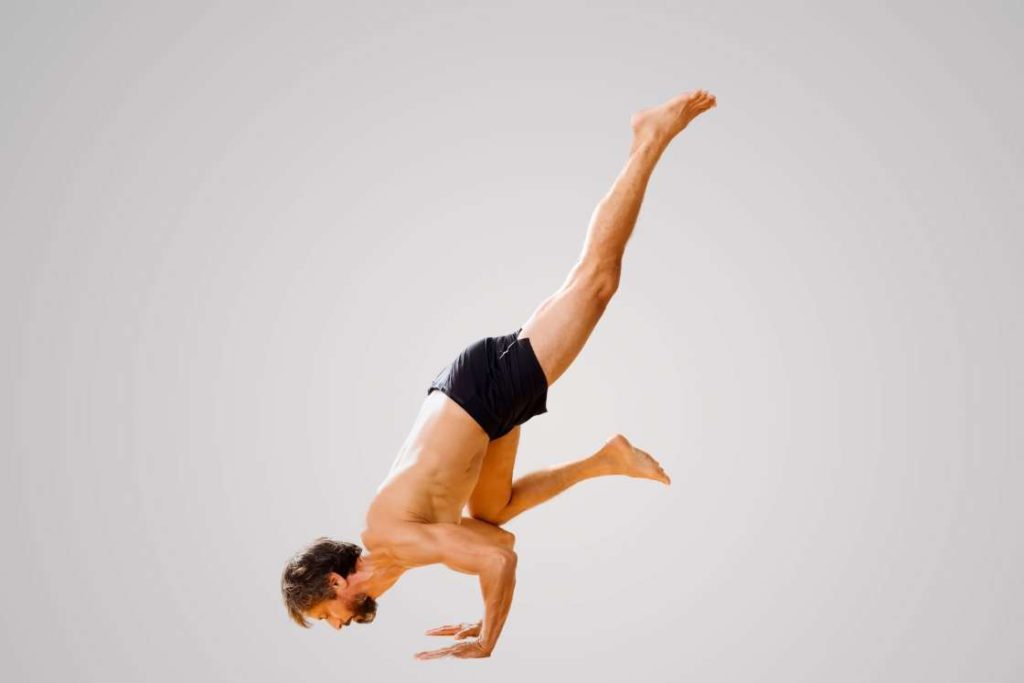
| Sanskrit Pronunciation | Eka Pada Bakasana (EHK-aah PAH-duh-BAk-AHS-anna) |
| Meaning | Eka = one / Pada = Leg / Baka = Crane / asana = pose |
| Pose Type | Balancing, Inversion, Prone |
| Pose Level | Intermediate Pose |
| Stretches | Hamstring, thighs, Pelvic, Hip flexors, shoulder, core, neck, spine |
| Other Names | One Foot Crane/Crow Pose |
Eka pada Bakasana is a balancing posture where the body in a forward bend balanced on the upper arm. The final shape of this asana shows practitioner requires strength in the wrist and the shoulder to hold the pose even for a while.
The upright position of the Eka Pada Bakasana guides the practitioner’s body with relaxation and tranquility. This helps in building the physical and emotional framework, which ultimately provokes spiritual belonging in the practitioners.
Meaning & Interpretation of Eka Pada Bakasana
Eka Pada Bakasana can be translated as Eka means one, pada means leg, Baka means crane/crow and asana means Pose. In English, this asana is popularly known as ‘one-legged crane pose’ or ‘one foot crow pose’. It’s so because in the final shape of this pose one leg is extended back nearly level with the floor in the air. The body looks like a one-legged still or meditating crane in this position.
Cranes bird represents peace, creativity, and good luck in many cultures and traditions. Here, the practice of Eka pada Bakasana with no activity marks the peace, and the way this pose is oriented keeps the creativity alive. Hence, it brings good luck in the sense of the health of the practitioners.
The Cranes are one of the birds that are found in a wide variety of habitats. This anticipates their tendency to cope with various physical situations. Therefore, the Eka Pada asana prepares the practitioners in a manner that he/she performs well whether in life or in challenging asana practice.
Practice Guide
The following points are easy and safe practices for the Eka pada Bakasana. So, the practitioners can go through one by one on their journey to experience this pose.
Contraindications of Eka Pada Bakasana
Eka Pada Bakasana should not be performed with the injury of the wrist, elbows, shoulder, neck, and knees. Moreover, pregnant women, patients with hypertension should not perform eka pada bakasana.
Preparatory Poses
- Kaundinyasana (Sage Kaundinya’s pose)
- Bakasana (Crane Pose)
- Marichyasana (Seated Twist Pose)
Eka Pada Bakasana Steps
- Begin by coming into Bakasana, your palms are placed at the shoulder-distance apart. There is a gap in between the fingers and the knees are placed behind the upper arms while the gaze shifted to the forwarding direction.
- As you reach the final of Bakasana, prepare the upper body to experience a weight change. By gripping the floor tighter and the forearms firmer than before along with a slight inward movement of elbows.
- Now, gradually shift your weight more on the right arm and then, lift off the left leg from its position towards the middle of the torso. After that, extend your leg in the air. The gaze remains in the middle of the forwarding direction.
- This is the final position of the Eka Pada Bakasana. Hold here for as long as it is comfortable without straining. Then return slowly by bending and bringing the left leg closer to the middle torso.
- Now, rest it on the back of the left upper arm by stabilizing the shoulder and forearms. Finally, into the Bakasana and then repeat the same asana with the left arm also. Ultimately, into the Bakasana and then release it as well to relax the body.
Follow Up Poses
- Adho Mukha Svanasana (Downward Facing Dog)
- Chaturanga Dandasana (Four Limbed-Staff Pose)
- Phalakasana (Plank Pose)
Precautions
Following precautionary points should be keep in mind while doing Eka Pada Bakasana.
- Practitioners should place their palms wide apart to equalize the bodyweight on them appropriately. On keeping palms closer one might fail to distribute the right weight while they practice and may fall.
- Avoid flattening of the upper back while transitioning from Bakasana to the Eka Pada Bakasana. This might result in falling, so, one should have to round the upper back while transitioning during the practice of this asana.
- Practitioners should avoid the jerking of the leg while going into the pose and returning from the pose. This could disorient the hand placement. So, by engaging core and hamstring muscles, one can achieve swiftness in their landing and take off.
Beginners Tips
- Using a block to lift the body – In Eka pada bakasana, beginners with weak forearms and shoulders can use blocks under their palms to lift the body higher in the pose. Blocks will allow the necessary height to stabilize the forearms and shoulder, which eventually helps in finishing the pose well.
- Placing block under shin bone – Practitioners with a weakened upper body may lose their balance of the other hand while lifting off the first leg into the air. Therefore, one can place a block vertically under their shin bone of the leg which also is lifted, and keep the other leg on the back of the corresponding upper hand. Then perform lifting, this will reduce the difficulty of the pose.
- Using strap to wrap elbows – A practitioner who is unable to hold the elbows closer in Bakasana might lose the balance or their elbows swayed away as they begin to lift into the Eka Pada Bakasana. So, the wrapping of a strap around the elbows can keep them at their positions. This will keep alive the strength of the pose.
Variations
The Eka Pada koundinyasana and one-legged crane pose forearm balance can be practiced as a variation for the Eka Pada Bakasana.
1. Eka Pada koundinyasana II
In this variation of Eka pada bakasana, the body is lifted on the palms and one leg is stretched sideward at 90 degrees from another leg.
To come into this pose, from downward dog place your one leg on the outer edge of your respective back arm and lift another leg off the ground. Then extend the first sidewards to come into the final position of the pose.
2. One-legged crane pose forearm balance
In one-legged crane pose forearm balance, the body remains similar as it is in Eka Pada Bakasana but the forearms of one hand rest beside the palm of the other hand.
In Eka Pada Bakasana, palms bear the entire weight of the body with one leg in the air and the other on the hand. Here, this asana is almost similar to the base pose with a slight change. The forearm rest on the floor rather than palms, as in the Eka Pada Bakasana.
Therapeutic Benefits
- The Eka Pada Bakasana is similar to the inversion where the heart placed higher than the head. Thus, improves blood circulation, which in turn boosts the nervous and endocrine system that produces an uplifting and rejuvenating effect. Ultimately, helpful in relieving stress and anxiety along with headaches and depressions.
- This asana helps in overcoming various digestive disorders like constipation, bloating, and irregular bowel movements. Practicing Eka Pada Bakasana stimulates stronger Peristalsis (the muscle contractions in your digestive tract) movement. This further overcomes digestive disorders. Moreover, inversion also increases the blood flow to the stomach, which ensures the functioning of the digestive organs.
Eka Pada Bakasana Benefits
The practice of Eka pada Bakasana improves the functioning of the various internal organs, strengthens the physical aspects, and side by side promotes the mental aspects as well.
1. Strengthens Core Muscles
The regular practice of Eka Pada Bakasana stabilizes the major muscles like pelvic floor muscles, transverse abdominis and external obliques, etc. This grabs the surrounding muscles as well in curing the ailments concerned.
2. Improves Concentration
The Eka Pada Bakasana practice improves concentration and focuses by triggering the endorphins secretions. This improves prioritizing work and allows you to block out distractions and better concentrate on the task at hand.
3. Improves Breathing Pattern
According to one of the studies [efn_note] Cardio-Pulmonary Physiology during Yoga Inversion Practice https://www.spotlightonresearch.com/yoga-research/cardio-pulmonary-physiology-during-yoga-inversion-practice [/efn_note], inversion in Eka Pada Bakasana corrects the abnormal breathing pattern by the facilitation of bronchodilation. Due to this respiratory bronchioles may be relaxed and perfusion of alveoli carried out more efficiently.
4. Strengthens Wrist, Forearms and Shoulder
The pressure exerted by the body in Eka pad Bakasana practice strengthens the Wrist, forearms, and shoulder. This increases the calcium absorption from the blood by raising the blood circulation to those active regions.
5. Activates Navel Chakra
The appropriate breathing along with accurate alignment in Eka Pada Bakasana, under the guidance of an experienced teacher, may activate Navel Chakra. This further boost the confidence, power, and control of the practitioner.
6. Maintain a healthy nervous system
According to one of the studies [efn_note] A comparative study of the effects of asan, pranayama, and asan-pranayama training on neurological and neuromuscular functions of Pondicherry police trainees https://www.ncbi.nlm.nih.gov/pmc/articles/PMC3734645/ [/efn_note], the regular practice of Eka Pada Bakasana along with other yogic practices improve neurological and neuromuscular functioning. Moreover, it also soothes the nervous system.
Conclusion
Eka Pada Bakasana is the challenging version of Bakasana and it is one the most effective asana in strengthening the upper body. This asana practice improves breathing and concentration. Both are the key element for the practice of Pranayama and Meditation. Hence, prepares for these practices.
Due to such an advanced approach, it is better to master Bakasana before getting into Eka Pada Bakasana to avoid any kind of mishappenings.
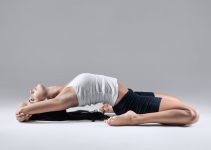
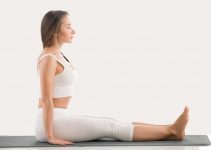
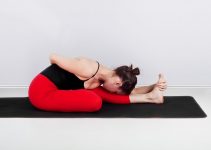
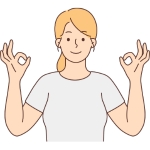
 Oct 24th to 30th
Oct 24th to 30th Learn Mudras
Learn Mudras  Deepen Your Practice
Deepen Your Practice  Find Inner Peace
Find Inner Peace